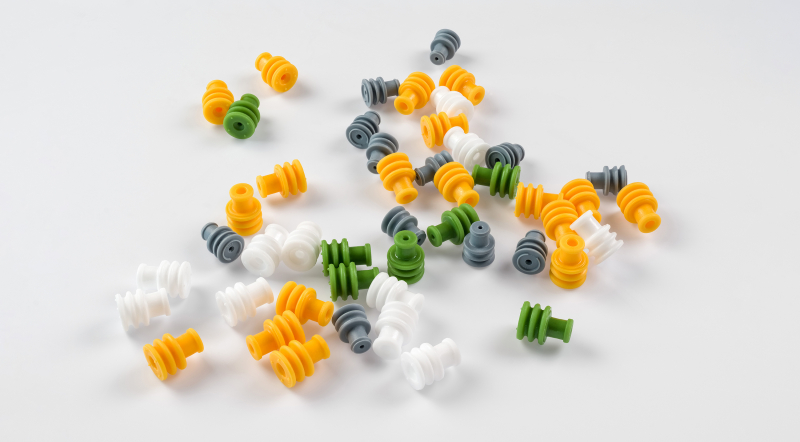Direct silicione injection

160-cavity valve gate nozzle
Higher output, less waste
When it comes to injection molding of silicone parts, a distinction is usually made between direct and indirect injection. RICO uses the direct method to manufacture silicone parts wherever possible. The company uses molds with up to 256 cavities in open systems and up to 160 cavities with a valve gate nozzle system, producing silicone parts around the clock with zero waste.
For the last decade or so, RICO has succeeded in steadily increasing the number of cavities in its molds. At RICO, the current technical state of the art allows for production with up to 160 cavities using a valve gate nozzle system, 256 cavities with an open system, as well as 96+96 cavities (2K), again with a valve gate nozzle system. The latter offers a range of product-related and environmental advantages. With this process, there is no visible injection point on each silicone part, and separate injection and filling of each individual cavity completely eradicates waste.
Material behavior
With the 160-cavity valve gate nozzle process, 160 valves (or needles) open and close, feeding the material into the cavity. Due to the extremely short cycle time, the pressure in the cavity during injection can reach between 500 and 1000 bar, depending on the part being produced. The pressure level is a key consideration, because every additional bar of pressure would increase the product’s susceptibility to flashing. In addition, silicone expands in the mold when it is exposed to pressure and higher temperatures. In the valve gate nozzle system, the cold runner can only be depressurized to a limited degree, so these considerations must be factored into the injection molding process.
Fine-tuning prohibited!
“It’s not in our interest to adjust individual valves or make adaptations. When production is up and running, we don’t make any more adjustments to the valves. Our system has to be stable with high process integrity right from the get-go,” notes Martin Rapperstorfer, RICO’s Head of Sales. Although adjustments to the mini and maxi valve gate nozzle are possible in principle, at RICO any fine-tuning is carried out exclusively at the in-house technical center. Once the mold has been calibrated and preconfigured, no more changes are made to the valves. Close attention also needs to be paid to the product’s filling behavior. Complex part geometries often require several injection points.
Fine-tuning permitted
RICO’s mold coordinators and, further down the line, the specialists from the Application Engineering department are the only staff members who actually make adjustments to molds. We might be great fans of technology, but we always need people working in the background!





